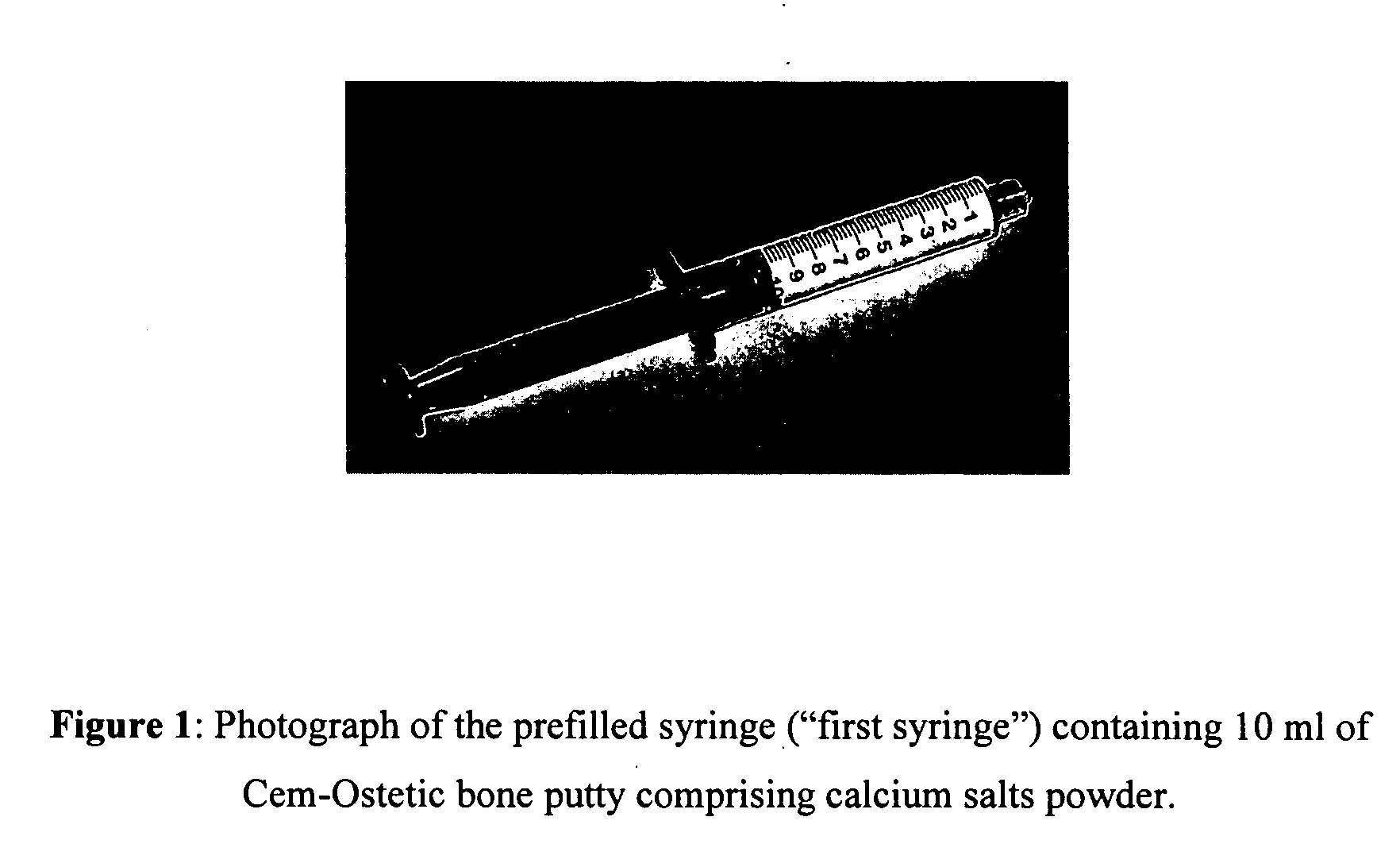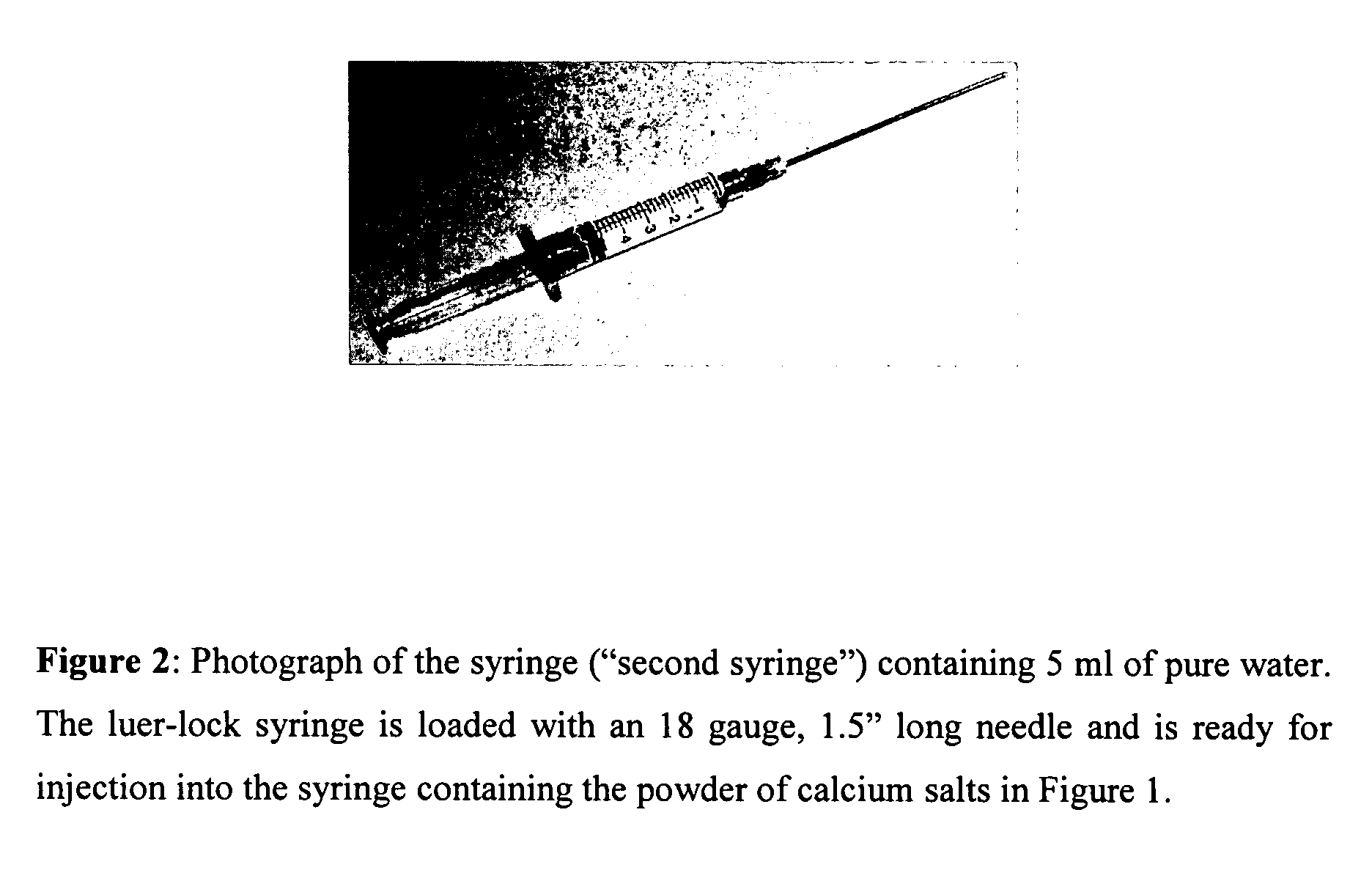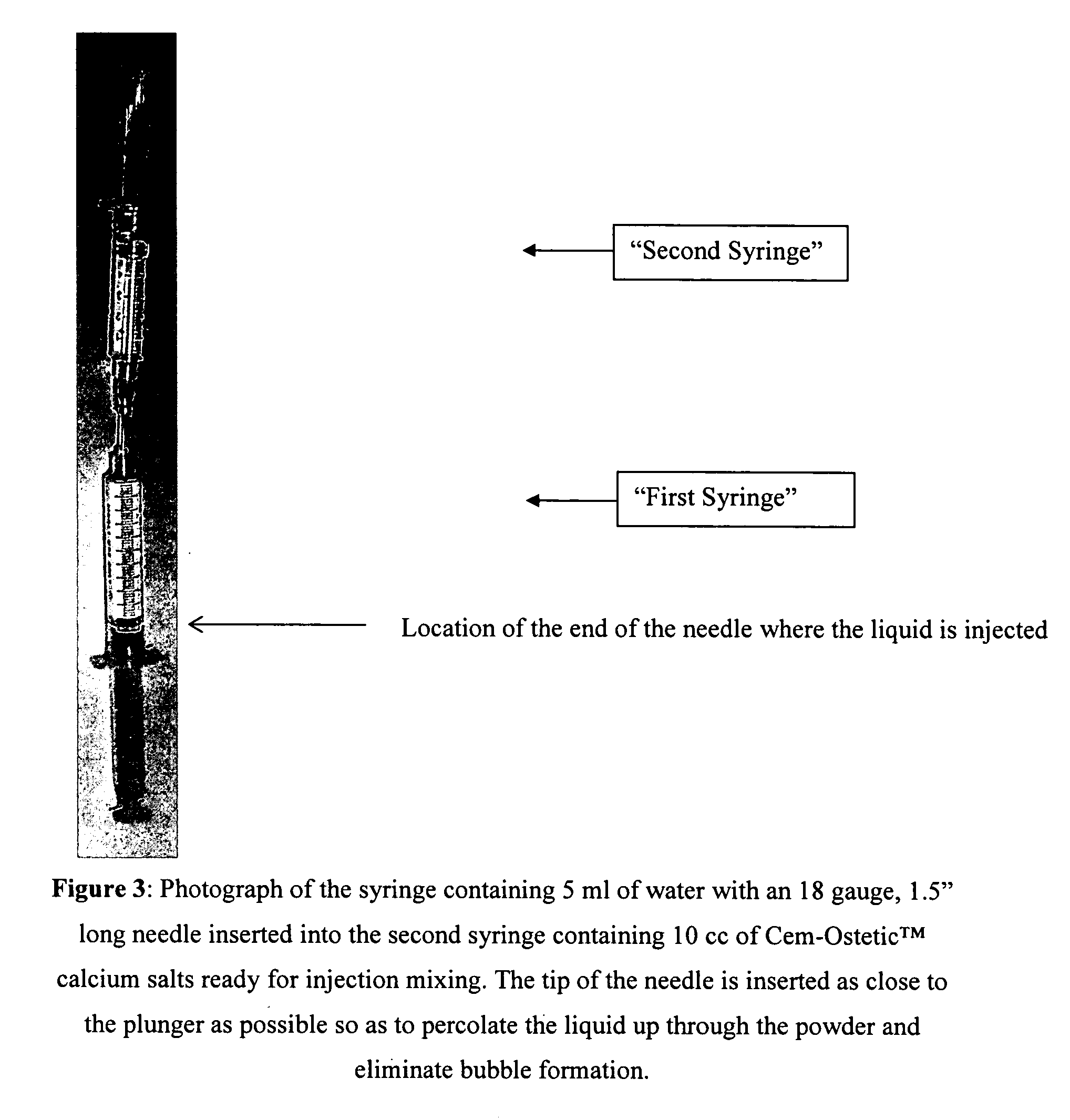Method of preparing rheological materials for bone and cartilage repair
a rheological material and cartilage technology, applied in the direction of biocide, plant growth regulators, mixers, etc., can solve the problems of requiring up to 360 psi to deliver the material, and wasting valuable injection time in mixing outside the syringe then transferring, so as to achieve the effect of maximizing the volume of powder
- Summary
- Abstract
- Description
- Claims
- Application Information
AI Technical Summary
Benefits of technology
Problems solved by technology
Method used
Image
Examples
example a
[0028] A self-setting neutral pH bone putty (Cem-Ostetic) comprised of bioresorbable calcium salts powder is loaded into a 10 ml syringe (see FIG. 1). A second syringe is filled with 5 ml water (see FIG. 2).
[0029] Step 1: an 18-gauge needle is mounted to the luer-lock tip of a syringe.
[0030] Step 2: the syringe is filled with non-pyrogenic USP sterile water.
[0031] Step 3: the female cap of a syringe loaded with Cem-Ostetic powder is removed and placed vertical with the tip facing up.
[0032] Step 4: the water is injected by inserting the 18-gauge needle through the tip the pre-filled powder syringe and by placing the tip next to the rubber stopper of the plunger.
[0033] Step 5: the needle is withdrawn once all the water is transferred into the powder syringe.
[0034] Step 6: a 14-gauge bone needle is placed at the end of the syringe containing the Cem-Ostetic paste.
[0035] Step 7: the viscous paste is injected to fill up a bone void.
PUM
| Property | Measurement | Unit |
|---|---|---|
| Length | aaaaa | aaaaa |
| Length | aaaaa | aaaaa |
| Volume | aaaaa | aaaaa |
Abstract
Description
Claims
Application Information
 Login to View More
Login to View More - R&D
- Intellectual Property
- Life Sciences
- Materials
- Tech Scout
- Unparalleled Data Quality
- Higher Quality Content
- 60% Fewer Hallucinations
Browse by: Latest US Patents, China's latest patents, Technical Efficacy Thesaurus, Application Domain, Technology Topic, Popular Technical Reports.
© 2025 PatSnap. All rights reserved.Legal|Privacy policy|Modern Slavery Act Transparency Statement|Sitemap|About US| Contact US: help@patsnap.com



